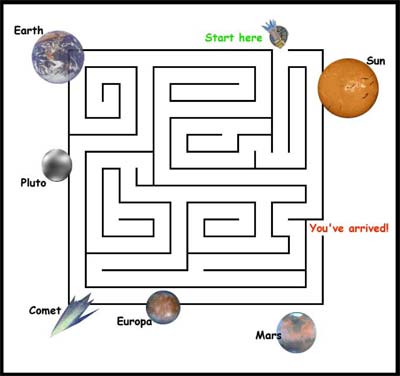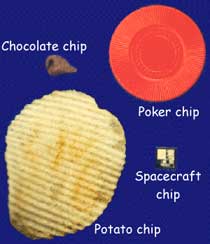Guide your spacecraft through a space maze

Click here for print-and-do space mazes.
If you know anything about the history of computers, you know that they are getting smaller and smaller. Just 20 or 30 years ago, it would take a whole big room to hold a computer with the power of the one you use to look at sites on the Internet.
Spacecraft are getting smaller and smaller too. The same new technology that lets computers be so small can be used to make robotic spacecraft very small. We call them robotic spacecraft because they don't carry any people. We send them off to do our work, while we stay home. As long as the spacecraft don't have to carry people, they can be very tiny and still do lots of useful work, traveling far from Earth and finding out all sorts of interesting things about other planets, moons, asteroids, comets, and space.
Why do we want spacecraft to be so small?
To answer that, which of these boys is easier to lift?


Just as a lighter load is easier to lift, a small spacecraft is easier than a big one to boost out of Earth's gravity and send on its way to its destination. That means we can use less fuel and a smaller rocket. Usually, the smaller the spacecraft, the less money it costs to build, launch, and operate, so we can afford do even more space missions.
Maybe spacecraft will never be quite as small as the spacecraft in our maze, but soon the entire computer system for a spacecraft will fit on a chip the size of our tiniest maze.




